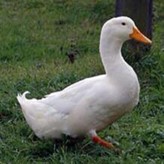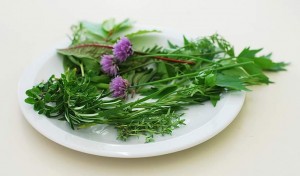Waste management experts report that “food waste represents almost 15 percent of the total waste sent to public landfills each year- this is the single largest type of disposed material.”
 Composting may not be the most glamorous of home improvement projects, but name another scenario where you can improve your garden, and do something for our planet by having less trash to go in our landfills every week. Starting your own compost is simple and has an enormous return. Compost is essentially layers of natural material that eventually break down to produce an extremely nutrient-rich soil (gardeners often call it “black gold”). This natural fertilizer is great for your garden as it replenishes nutrients missing from damaged soil. As any gardener will tell you: the success of your garden depends largely on the quality of your dirt.
Composting may not be the most glamorous of home improvement projects, but name another scenario where you can improve your garden, and do something for our planet by having less trash to go in our landfills every week. Starting your own compost is simple and has an enormous return. Compost is essentially layers of natural material that eventually break down to produce an extremely nutrient-rich soil (gardeners often call it “black gold”). This natural fertilizer is great for your garden as it replenishes nutrients missing from damaged soil. As any gardener will tell you: the success of your garden depends largely on the quality of your dirt.
Step One – A Container for your compost
With more people catching onto composting, the options of where and how to keep your pile have increased dramatically. Now-a-days, you can buy prebuilt composting bins. These devices are typically plastic and are designed to keep odors away and thus, critters at bay!

The models vary widely from what they look like and what they can do. Some bins are stationary while others, called tumblers, can be turned by a handle. I personally like this option as it saves on the back straining job of turning your compost by hand with a shovel.
You can also make your own bin; it can be constructed in an open design out of wood pallets, wire mesh, or old fencing. Just know this: an open compost pile is likely to smell and attract bugs and animals. If you go this route, make sure it’s in the wide open, and not next to your bedroom window. For a homemade enclosed composting container one idea I found in my research was is making one from a giant plastic container normally used for storage. Simply drill holes in the bottom and in the lid and you have a very simple and inexpensive composting bin.
Step Two – Add Food and Yard Waste
What Not to Put in it:
What to avoid putting in your compost is almost more important than what goes in. Certain substances can be toxic and therefore harmful. Dog, cat, and bird feces are a prime example. Also, avoid any green materials treated with pesticides. Other composting no-nos:
- Limes
- Meat or fish
- Bones, grease, fat
- Cat litter
- Plastic and laminated paper
- Diseased or rotting plants
- Big stalks or roots (cut or shred them first)
- Treated woods
 What you CAN put in your compost:
What you CAN put in your compost:
There should be both “brown” (carbon-rich) and “green” (nitrogen-rich) ingredients in your compost pile. Most of the items – about two-thirds – should be brown ingredients.
- Brown components are rich in carbon and include dried leaves, pine needles, spoiled hay, straw and paper.
- Green ingredients are rich in nitrogen. You will want to create a thin layer of green ingredients between thick layers of brown ingredients. Remember, two-thirds of your pile should be brown. You can create a 5-6″ layer of brown, topped with up to 2″ of green, then another layer of brown, and so on. Common green components include grass clippings, yard refuse (old vegetable stalks, last fall’s flower stalks), coffee grounds, barnyard animal manure and fruit and vegetable kitchen waste. (Note: If you are using a tumbler, layers aren’t necessary. Just toss everything in!)
- Layer Number 1 should consist of brown ingredients. The key is to have good circulation at the bottom of your bin or pile, so don’t pile the clippings on too thick, about 1-2″ should suffice.
- The next layers should alternate between brown and green materials. Each layer should be about 2″ thick, and a thin layer of manure can be placed between green and brown layers. A trick of the trade: break down any material that is in large pieces before adding it to your compost pile; it will decompose faster.
Step Three – Maintaining Your Compost
- Rule of thumb: The more you manage your compost pile, the quicker you will get rich, black compost. Management ranges from simply leaving the pile (everything decays in time, but this method may take a year or more) to turning the compost once or twice a week with a garden spade so the cooler exterior of the pile is turned under. This is where the tumbler compost bins save your back.
- Keep your compost pile damp. Depending upon your weather, this may be easy to achieve naturally during some seasons. You can check for moisture by turning over the compost with a spade or aerator – the center of the pile shouldn’t dry out. Depending upon the weather, you may have to sprinkle your compost pile occasionally to keep it damp, or cover it with a tarp to prevent it from being soaked regularly.
- Place the bin in an area that gets a fair amount of sun, as you need the container to heat up to start working. The interior of the pile should be warm. This indicates decomposition of the organic materials is taking place. Your compost should start to heat up in a day or so to about 150°F. If it doesn’t, there aren’t enough green materials. Some of the composting bins come with thermometers, but you can buy one if it doesn’t. Just stick it in the center of the pile to see if your mixture is correct.
Going, Going, Gone!
Starting a compost means that you can truly call yourself a recycler. You’ll have less garbage and a great garden to show for it. Check out www.lehmans.com for a wide variety of composting supplies and other practical, hands-on gardening tools.

































Hey, loved this article!! Finally, something written in terms that a relative newb can understand. I had a compost pile going last year, but for whatever reason, it didn’t work out.
Now, I’m ready to give it another go.
Thanks!!
LIMES top the “do not compost” list??? Limes as in citrus fruit? Ok, agreed, I do not add ANY citrus to my piles either for a couple of reasons, but I have a feeing the author of the article meant to say that the agricultural lime such as that we use directly on lawns & gardens should not be added to compost containing fresh manure as it reacts chemically with the nitrogen, driving it off as ammonia, thuis losing some of the nnutrients.
This made me chuckle since at a composting workshop given by my master gardening group one woman in attendance did actually think the speaker meant limes, the fruit, so she asked if it was OK to add lemons! LOL
Strange as it sounds – I did mean lime as in the fruit. This goes for all citrus fruits worms do not like them and a garden with plenty of worms is a good thing.
“Earthworms can be fed all forms of food waste, yard & garden waste, (plant and root material are OK but not too much dirt), paper and cardboard too wet to recycle otherwise, etc. Do not feed them; metals, foils, plastics, chemicals, oils, solvents, insecticides, soaps, paint, etc. Avoid all citrus products (oranges, lemons, limes, grapefruit), onions, garlic cloves, extremely hot and heavily spiced foods, and high acid foods.”
http://www.co.pasquotank.nc.us/departments/recycle/compost/composting%20webpage/Composting%20and%20Grasscycling%20Made%20Easy.htm
I have always thrown my coffee grinds, grapefruit peels, orange peels, lemon peels, and lime peels in my compost and have plentiful worms. Maybe it depends on the ph of the soil to start with.